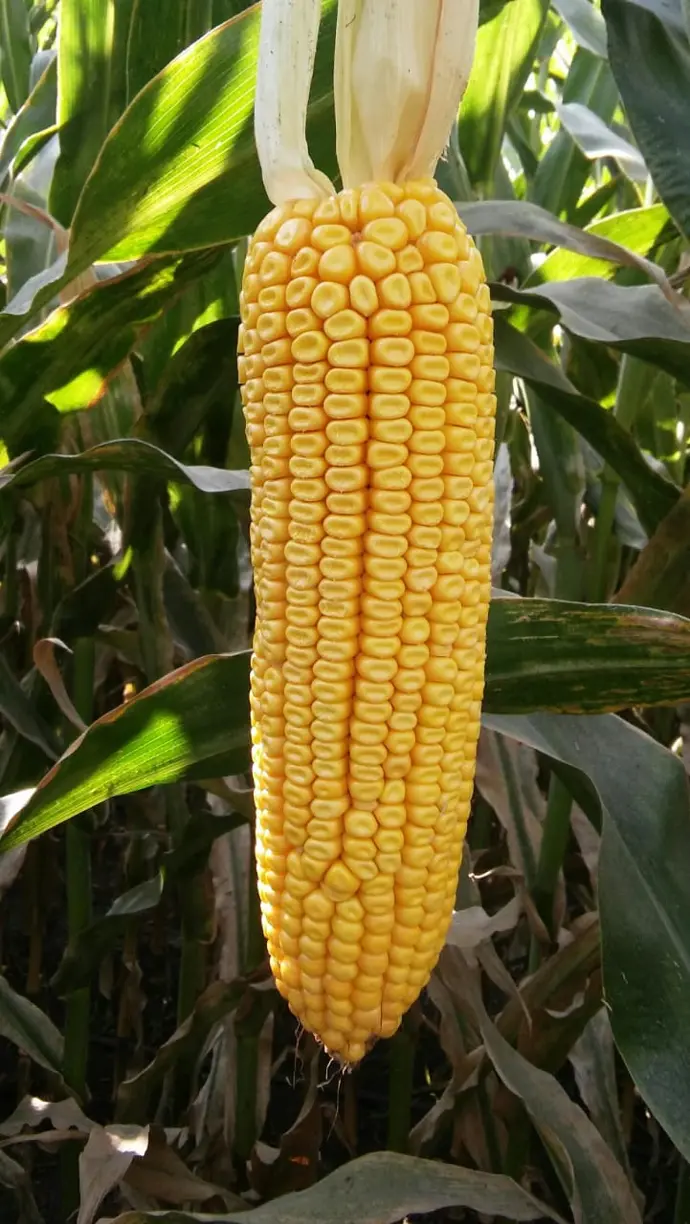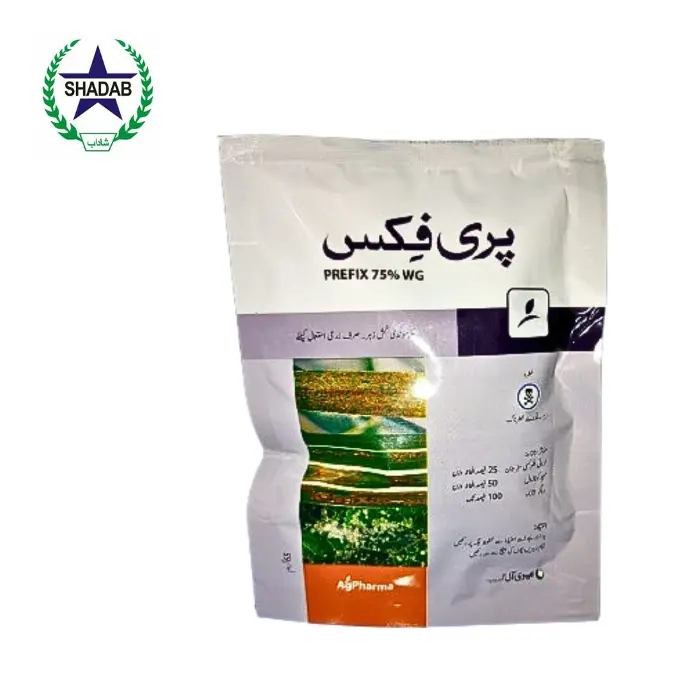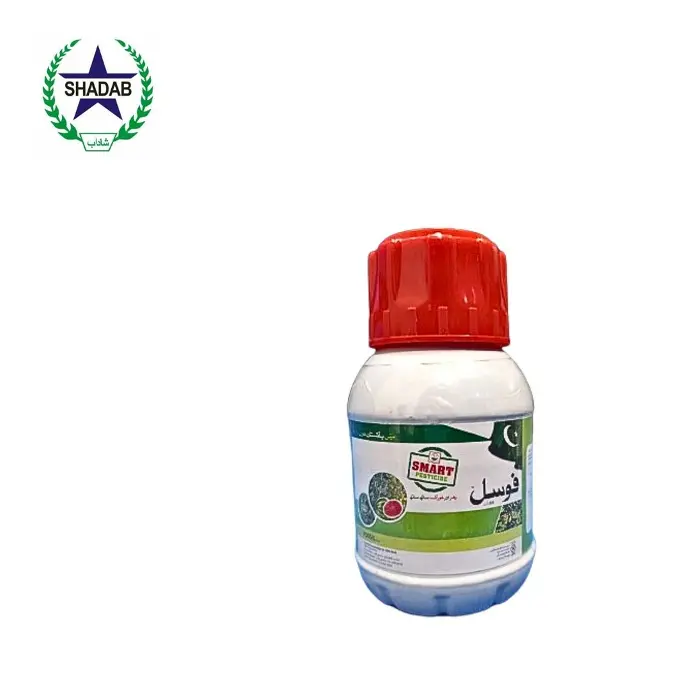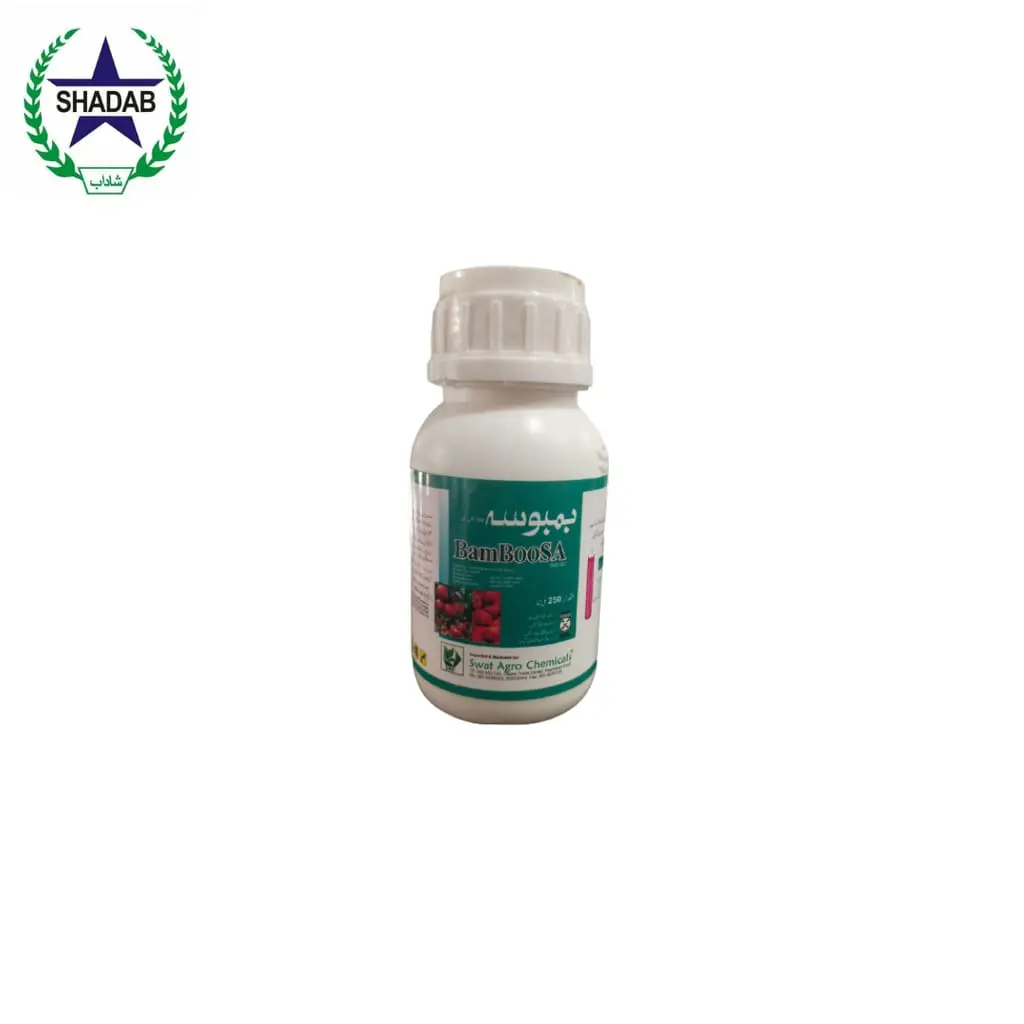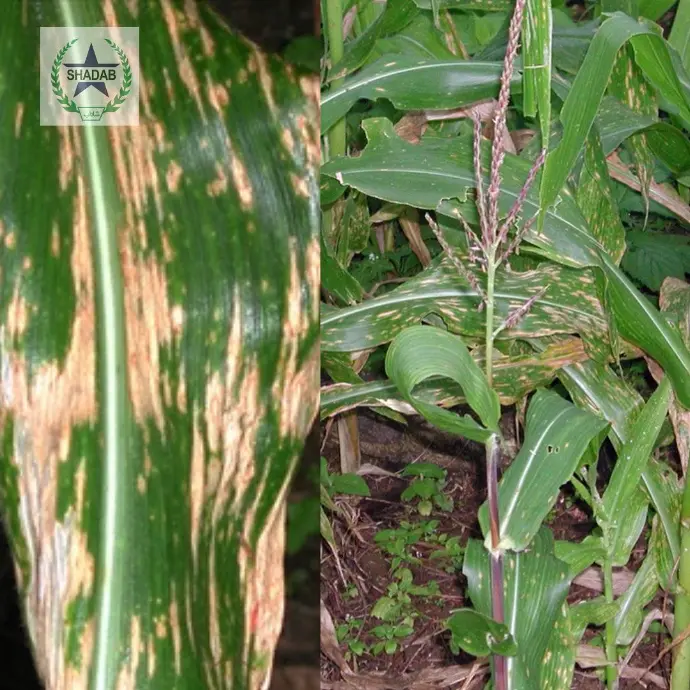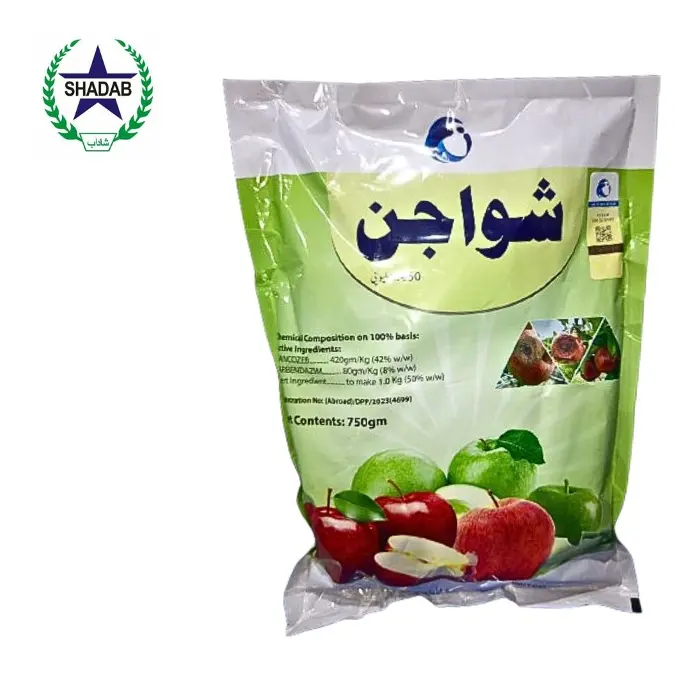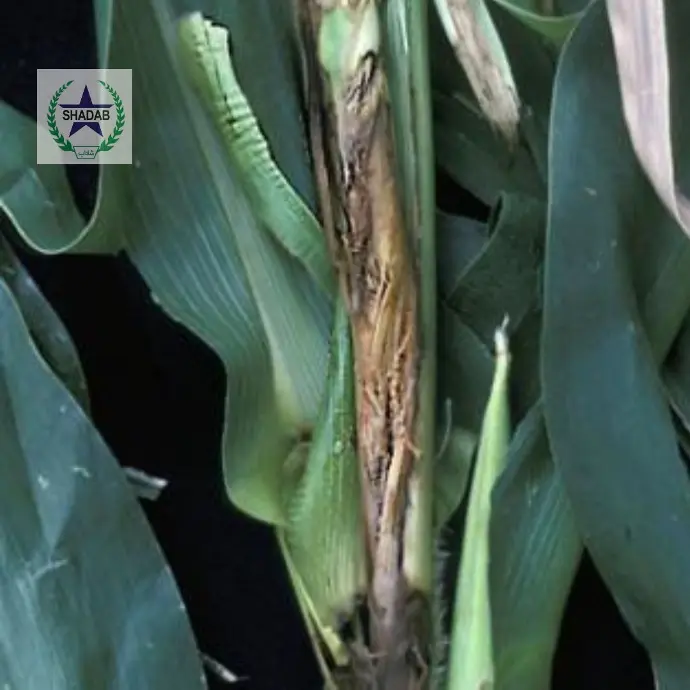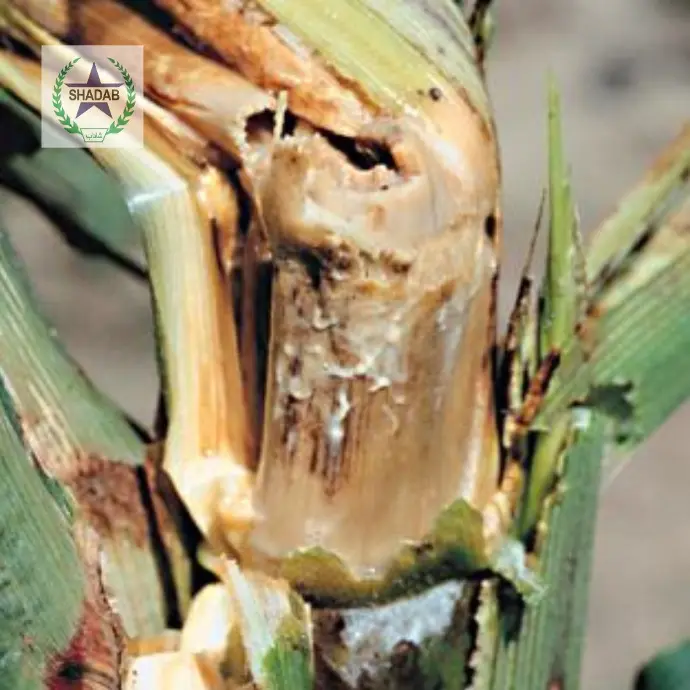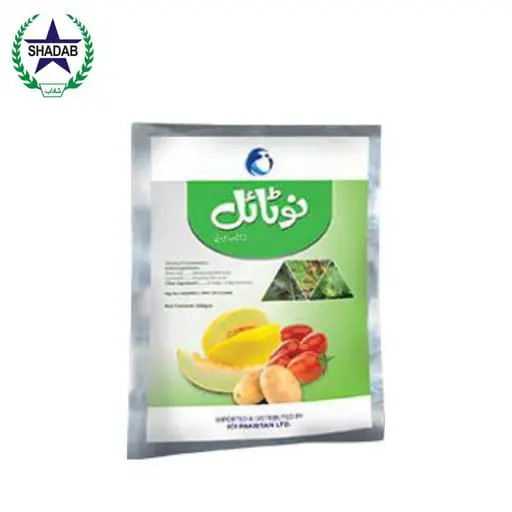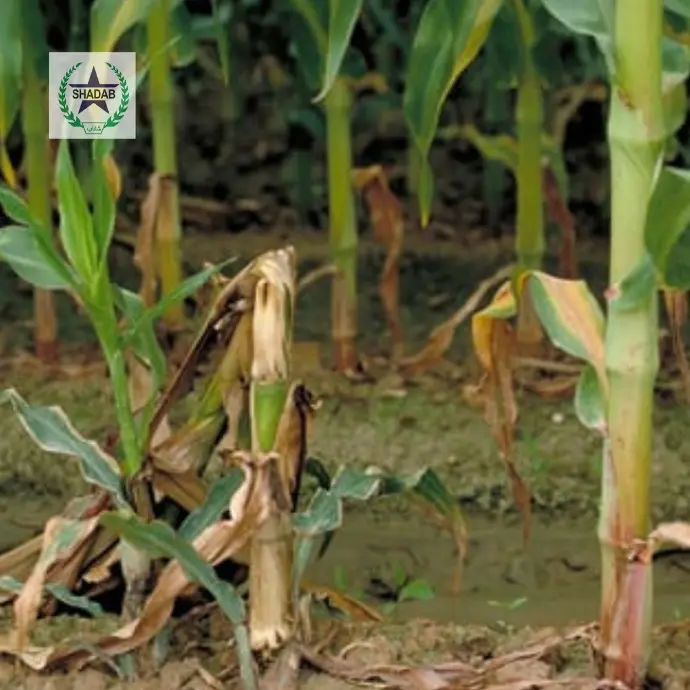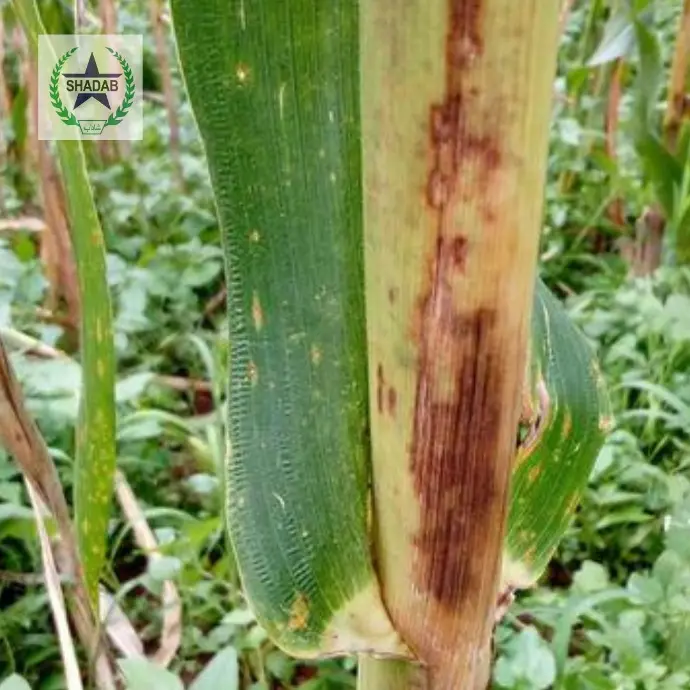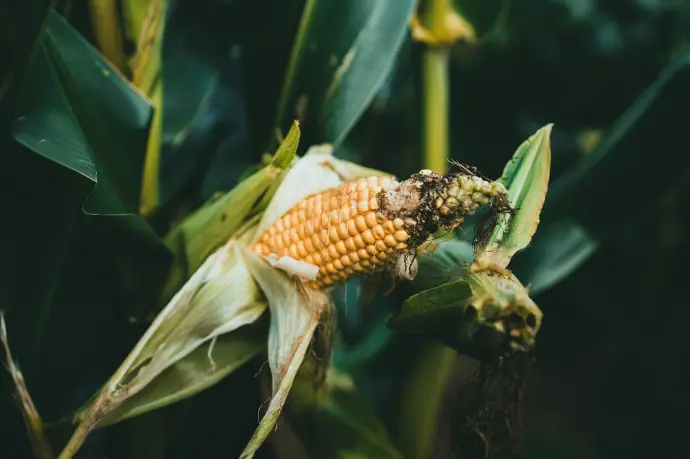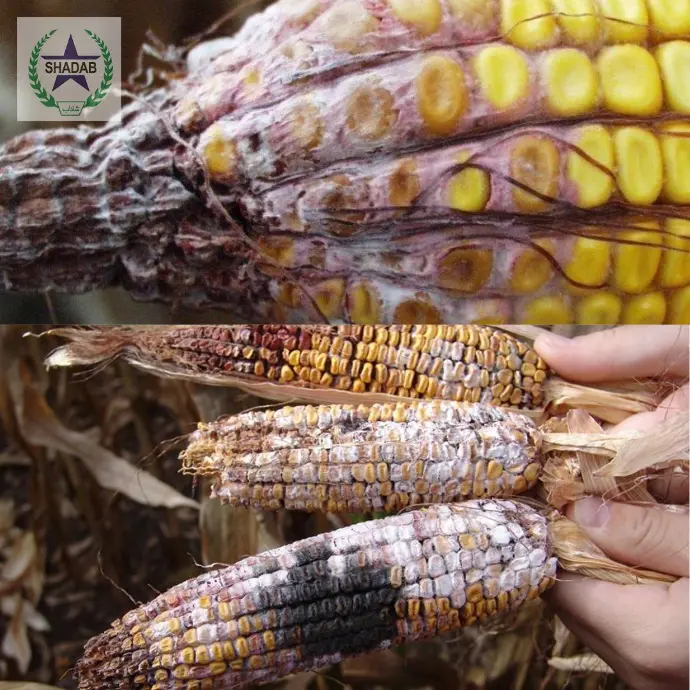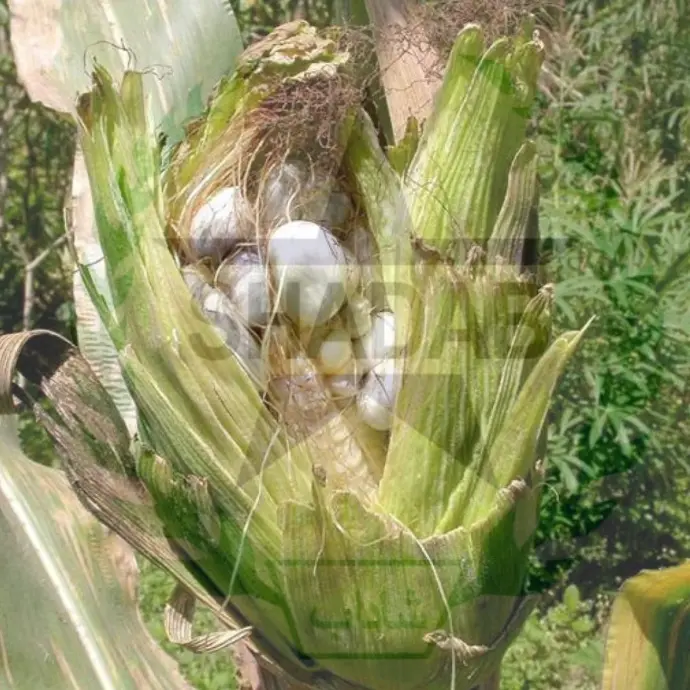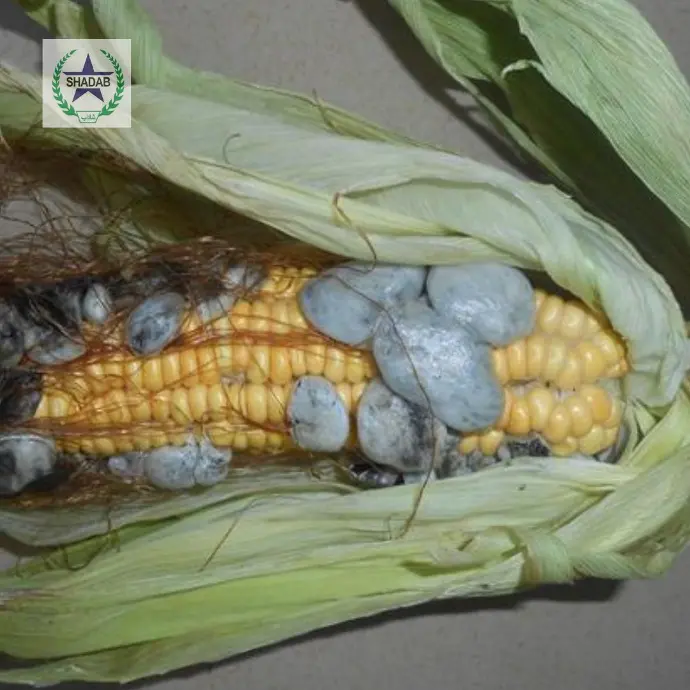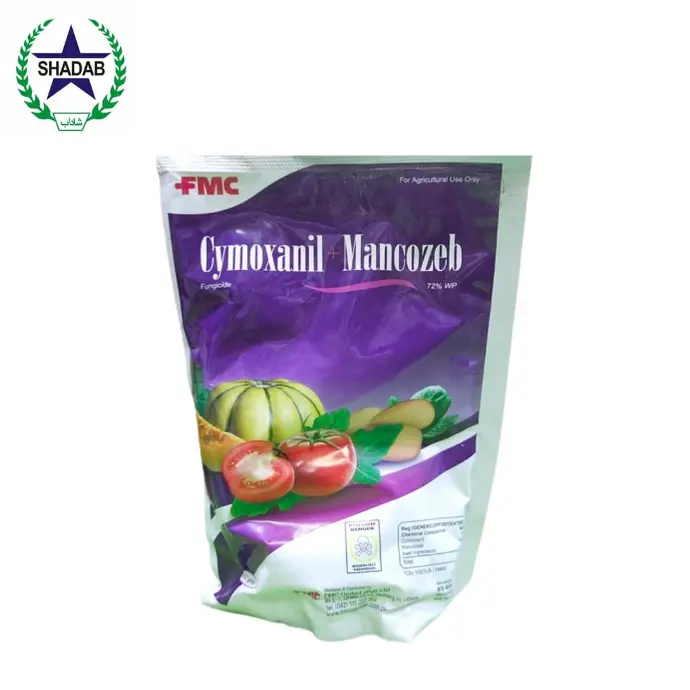CORN DISEASES AND MANAGEMENT PRACTICES
Introduction to Maize Disease
To ensure the optimal yield of corn crops, effective disease management is crucial. Strategies for integrated disease management include the application of fungicides, implementing crop rotation, managing crop residues, and selecting appropriate corn varieties. The primary categories of corn diseases include ear rots, stalk rots, and fungal leaf blights. A successful pest management program begins with thorough crop scouting, which involves inspecting the corn for any signs of disease during each field visit. Understanding the potential timeline for the emergence of specific diseases can enhance the effectiveness of scouting and management strategies. Utilizing the accompanying calendar can serve as a valuable tool for monitoring corn diseases. Factors such as the planting date and the accumulation of growing degree days significantly influence the optimal timing for scouting activities.
مکئی کی فصلوں کی زیادہ سے زیادہ پیداوار کو یقینی بنانے کے لیے بیماریوں کا موثر انتظام بہت ضروری ہے۔ مربوط بیماریوں کے انتظام کے لیے حکمت عملیوں میں فنگسائڈز کا استعمال، فصل کی گردش کو نافذ کرنا، فصل کی باقیات کا انتظام، اور مکئی کی مناسب اقسام کا انتخاب شامل ہیں۔ مکئی کی بیماریوں کی بنیادی اقسام میں کان کی سڑ، ڈنٹھل کی سڑ، اور پھپھوندی کے پتوں کے جھرنے شامل ہیں۔ ایک کامیاب کیڑوں کے انتظام کے پروگرام کا آغاز فصل کی مکمل اسکاؤٹنگ سے ہوتا ہے، جس میں ہر کھیت کے دورے کے دوران بیماری کی کسی بھی علامت کے لیے مکئی کا معائنہ کرنا شامل ہوتا ہے۔ مخصوص بیماریوں کے ظہور کے لیے ممکنہ ٹائم لائن کو سمجھنا اسکاؤٹنگ اور انتظامی حکمت عملیوں کی تاثیر کو بڑھا سکتا ہے۔ ساتھ والے کیلنڈر کا استعمال مکئی کی بیماریوں کی نگرانی کے لیے ایک قیمتی ٹول کے طور پر کام کر سکتا ہے۔ پودے لگانے کی تاریخ اور بڑھتی ہوئی ڈگری کے دنوں کا جمع جیسے عوامل اسکاؤٹنگ کی سرگرمیوں کے لیے بہترین وقت کو نمایاں طور پر متاثر کرتے ہیں۔
Seed and Seedling Diseases
Seed treatment fungicides play an essential role in a comprehensive disease management approach for corn cultivation. During the critical phases of germination and seedling establishment, it is vital to safeguard against fungi responsible for seed decay, seedling blight, and damping-off. These fungicides offer necessary protection, especially in challenging environmental conditions such as high residue, cold, wet, compacted soils, or excessively dry environments, which can hinder germination and emergence, thereby increasing the vulnerability of seeds and seedlings to fungal attacks. Additionally, products from Applied Solutions are formulated with insecticides that defend against early-season insect damage, further aiding in the management of seedling diseases by preventing root-feeding insects that can create entry points for fungal infections.Symptoms of seed and seedling diseases include poor growth of affected seeds, with some seeds potentially germinating but leading to wilting and necrosis in the plants. This wilting is particularly prevalent in newly sprouted plants, especially during the early stages of crop development. To manage these diseases, it is advisable to utilize resistant varieties of plants. Additionally, treating seeds with Bamboosa, prefix, combines ultra, fossil and Ashnan fungicides can be an effective measure in combating these issues.
بیجوں کے علاج کے لیے فنگسائڈز مکئی کی کاشت کے لیے ایک جامع بیماری کے انتظام کے نقطہ نظر میں اہم کردار ادا کرتی ہیں۔ انکرن اور بیج کے قیام کے اہم مراحل کے دوران، بیجوں کے سڑنے، بیجوں کے جھلس جانے اور نم ہونے کے لیے ذمہ دار پھپھوندی سے حفاظت کرنا بہت ضروری ہے۔ یہ فنگسائڈز ضروری تحفظ فراہم کرتے ہیں، خاص طور پر چیلنجنگ ماحولیاتی حالات جیسے کہ زیادہ باقیات، ٹھنڈی، گیلی، کمپیکٹ شدہ مٹی، یا ضرورت سے زیادہ خشک ماحول میں، جو انکرن اور ابھرنے میں رکاوٹ بن سکتے ہیں، اس طرح بیجوں اور پودوں کو پھپھوندی کے حملوں کا خطرہ بڑھاتے ہیں۔ مزید برآں، اپلائیڈ سلوشنز کی مصنوعات کیڑے مار ادویات کے ساتھ تیار کی جاتی ہیں جو ابتدائی سیزن میں کیڑوں سے ہونے والے نقصان کے خلاف دفاع کرتی ہیں، جڑوں کو کھانا کھلانے والے کیڑوں کو روکنے کے ذریعے بیج کی بیماریوں کے انتظام میں مزید مدد کرتی ہیں جو فنگل انفیکشن کے لیے داخلے کے مقامات بنا سکتے ہیں بیج اور بیج کی بیماریوں کی علامات میں متاثرہ بیجوں کی ناقص نشوونما شامل ہے، کچھ بیج ممکنہ طور پر انکرن ہوتے ہیں لیکن پودوں میں مرجھانے اور نیکروسس کا باعث بنتے ہیں۔ یہ مرجھانا خاص طور پر نوزائیدہ پودوں میں ہوتا ہے، خاص طور پر فصل کی نشوونما کے ابتدائی مراحل میں۔ ان بیماریوں سے نمٹنے کے لیے، پودوں کی مزاحمتی اقسام کو استعمال کرنے کا مشورہ دیا جاتا ہے۔ مزید برآں، بیجوں کا علاج بانس، پریفکس، الٹرا، فوسل اور اشنان فنگسائڈس کے ساتھ کرنا ان مسائل سے نمٹنے کے لیے ایک مؤثر اقدام ہو سکتا ہے۔
Leaf Blight of Maize
The initial manifestation of this disease is observed on the lower leaves, subsequently progressing to affect the entire foliage. Characteristic symptoms include the emergence of brown, oval-shaped lesions that proliferate swiftly at temperatures ranging from 25 to 30 degrees Celsius. In the Punjab region, the disease tends to target maize crops as they approach maturity.To manage this condition, it is recommended to apply the fungicide Bamboosa, prefix and fossil dosage. Additionally, it is crucial to eliminate any plant debris from previous crops to prevent the recurrence of the disease.Control Strategies To mitigate the occurrence of this disease, it is recommended to treat the seeds with thiophenate methyl 70 WP at a dosage of 2 grams per kilogram prior to planting. The disease is characterized by the presence of a white to pink or salmon-hued, cotton-like mold that can appear on individual or grouped kernels on the ear. The decay process typically initiates in kernels that have been compromised by insect damage. Infected kernels often exhibit a tan or brown coloration or may display white streaks.
اس بیماری کا ابتدائی ظہور نچلے پتوں پر دیکھا جاتا ہے، جو بعد میں پورے پودوں پر اثر انداز ہوتا ہے۔ خصوصیت کی علامات میں بھورے، بیضوی شکل کے گھاووں کا ابھرنا شامل ہے جو 25 سے 30 ڈگری سیلسیس کے درجہ حرارت پر تیزی سے پھیلتے ہیں۔ پنجاب کے علاقے میں، بیماری مکئی کی فصلوں کو نشانہ بناتی ہے کیونکہ وہ پختگی کے قریب پہنچتی ہیں۔ اس حالت کو سنبھالنے کے لیے، فنگسائڈ بانس، پریفکس اور فوسل ڈوز کو استعمال کرنے کی سفارش کی جاتی ہے۔ مزید برآں، بیماری کی تکرار کو روکنے کے لیے پچھلی فصلوں سے پودوں کے کسی بھی ملبے کو ختم کرنا بہت ضروری ہے۔ کنٹرول کی حکمت عملی اس بیماری کی موجودگی کو کم کرنے کے لیے، یہ تجویز کی جاتی ہے کہ بیجوں کو تھیوفینیٹ میتھائل 70 ڈبلیو پی کے ساتھ 2 گرام فی خوراک کے ساتھ علاج کریں۔ پودے لگانے سے پہلے کلوگرام اس بیماری کی خصوصیت سفید سے گلابی یا سالمن رنگ کے، روئی کی طرح کے سانچے کی موجودگی سے ہوتی ہے جو کان پر انفرادی یا گروہی گٹھلی پر ظاہر ہو سکتی ہے۔ کشی کا عمل عام طور پر دانا شروع کرتا ہے جو کیڑوں کے نقصان سے سمجھوتہ کیا گیا ہے۔ متاثرہ دانا اکثر ٹین یا بھورے رنگ کی نمائش کرتے ہیں یا سفید لکیریں دکھا سکتے ہیں۔
Stalk Rot of Maize
Stalk rot is characterized by several distinct symptoms that indicate the presence of the disease. Initially, the plants exhibit decay starting from the second internodes, leading to a noticeable pale coloration of the leaves, which subsequently dry out and cause the plants to collapse onto the ground. Upon examination of the infected stalks, a dark brown discoloration of the phloem is observed, accompanied by browning of the surrounding tissues and a shredding of the pith.To manage stalk rot effectively, several treatment options are available. One recommended approach is to treat seeds with amistar top at a dosage of 2 grams per kilogram of seed. Additionally, the cultivation of resistant plant varieties can significantly mitigate the impact of this disease. Implementing ridge sowing techniques has also been shown to reduce the incidence of stalk rot, thereby promoting healthier crop yields. To mitigate the occurrence of Stalk Rot, it is advisable to treat seeds with Topsun 70 WP at a dosage of 2 grams per kilogram and also the shuaijin product prior to planting. For effective curative measures, the application of Thiophenate methyl at a rate of 1 kilogram per acre or fosetyl-aluminum at the same rate is recommended, as these treatments have been shown to yield satisfactory outcomes.
ڈنٹھل سڑنا کئی الگ الگ علامات سے ظاہر ہوتا ہے جو بیماری کی موجودگی کی نشاندہی کرتے ہیں۔ ابتدائی طور پر، پودے دوسرے انٹرنوڈس سے شروع ہونے والے زوال کی نمائش کرتے ہیں، جس سے پتوں کا ہلکا ہلکا رنگ ہوتا ہے، جو بعد میں سوکھ جاتا ہے اور پودے زمین پر گرنے کا سبب بنتے ہیں۔ متاثرہ ڈنڈوں کے معائنے پر، فلوئم کی گہرا بھوری رنگت دیکھی جاتی ہے، اس کے ساتھ ارد گرد کے ٹشوز کا بھورا ہونا اور گڑھے کا ٹکڑا ہوتا ہے۔ ڈنٹھل سڑنے کے مؤثر طریقے سے انتظام کرنے کے لیے، ڈنٹھل کے علاج کے کئی اختیارات دستیاب ہیں۔ ایک تجویز کردہ طریقہ یہ ہے کہ ٹوپرین-ایم کے ساتھ 2 گرام فی کلوگرام بیج کی مقدار میں بیجوں کا علاج کیا جائے۔ مزید برآں، مزاحم پودوں کی اقسام کی کاشت اس بیماری کے اثرات کو نمایاں طور پر کم کر سکتی ہے۔ رج کی بوائی کی تکنیکوں کو لاگو کرنے سے ڈنٹھل سڑنے کے واقعات کو کم کرنے کے لیے بھی دکھایا گیا ہے، اس طرح فصل کی صحت مند پیداوار کو فروغ ملتا ہے۔ ڈنٹھل سڑ کی موجودگی کو کم کرنے کے لیے، یہ مشورہ دیا جاتا ہے کہ بیجوں کا علاج Topsun 70 WP کے ساتھ 2 گرام فی کلوگرام کی مقدار میں کریں اور پودے لگانے سے پہلے شواجین پروڈکٹ بھی۔ مؤثر علاج معالجے کے لیے، تھیوفینیٹ میتھائل کو 1 کلوگرام فی ایکڑ کی شرح سے یا اسی شرح پر فوسیٹیل-ایلومینیم کے استعمال کی سفارش کی جاتی ہے، کیونکہ یہ علاج تسلی بخش نتائج برآمد کرنے کے لیے دکھایا گیا ہے۔
Ear and Grain Rot of Maize
Ear rot is a condition primarily caused by various fungal species. Infected kernels exhibit a characteristic cotton-like growth, and in some instances, a light blue-green or black powder may be observed either between the kernels or on the surface of the cob.To manage ear rot effectively, it is advisable to utilize resistant varieties or hybrids. Additionally, it is crucial to eliminate any remaining plant debris following the harvest. When storing cobs in godowns, it is essential to ensure that the moisture content does not exceed 12%.To mitigate the occurrence of ear and grain rot, it is advisable to limit the application of nitrogen fertilizers on your lawn. During the growing season, abnormal growths known as galls may form on any above-ground portion of the plant, with young and actively growing tissues being particularly susceptible. Typically, it is the ear tissue that exhibits the development of these galls.Use shuaijin fungicide product to mitigate its effect.
مکئی کی گٹھلی کا حصہ سڑنا اور دانوں کی سڑنا ایک ایسی حالت ہے جو بنیادی طور پر مختلف کوکیی انواع کی وجہ سے ہوتی ہے۔ متاثرہ گٹھلی روئی جیسی خصوصیت کی نشوونما کو ظاہر کرتی ہے، اور بعض صورتوں میں، گٹھلی کے درمیان یا کوب کی سطح پر ہلکے نیلے سبز یا سیاہ پاؤڈر کا مشاہدہ کیا جا سکتا ہے۔ قسمیں یا ہائبرڈ. مزید برآں، فصل کی کٹائی کے بعد پودوں کے باقی ماندہ ملبے کو ختم کرنا بہت ضروری ہے۔ گوداموں میں گوداموں کو ذخیرہ کرتے وقت، اس بات کو یقینی بنانا ضروری ہے کہ نمی کی مقدار 12 فیصد سے زیادہ نہ ہو، کان اور اناج کے سڑنے کے واقعات کو کم کرنے کے لیے، یہ مشورہ دیا جاتا ہے کہ آپ اپنے لان میں نائٹروجن کھادوں کے استعمال کو محدود کریں۔ بڑھتے ہوئے موسم کے دوران، غیر معمولی نشوونما جو کہ پِتّے کے نام سے جانا جاتا ہے، پودے کے کسی بھی اوپری حصے پر بن سکتا ہے، جس میں جوان اور فعال طور پر بڑھنے والے ٹشوز خاص طور پر حساس ہوتے ہیں۔ عام طور پر، یہ کان کی بافتیں ہیں جو ان گلوں کی نشوونما کو ظاہر کرتی ہیں اس کے اثر کو کم کرنے کے لیے شواجین فنگسائڈ پروڈکٹ کا استعمال کریں۔
Smut of Maize
To prevent the occurrence of smut, it is recommended to treat the seeds with metalxyl. and cymoxanil mancozeb. Symptoms of stalk rot typically begin to manifest several weeks after the silking stage. Infected plants exhibit wilting, desiccation, and the development of greyish-green foliage. The lower internodes become spongy and exhibit a brown discoloration. Additionally, pycnidia, which are small black fruiting structures, tend to cluster around the nodes of the rind.The selection of corn products that exhibit tolerance is crucial in combating corn diseases, especially in scenarios where corn is cultivated in succession. It is essential to evaluate the capacity of these products to endure prevalent diseases specific to the region. When engaging in corn-on-corn rotations, it is advisable to opt for varieties that demonstrate high yield potential, robust resistance to foliar and stalk diseases, effective insect protection, and strong emergence and seedling vigor characteristics. In instances of continuous corn production, diseases such as Goss's Wilt, various stalk and ear rots, gray leaf spot, corn leaf blight, and seedling blights may intensify.
مکئی کی کانگیاری کی موجودگی کو روکنے کے لیے، پودے لگانے سے پہلے بیجوں کو۔ ڈنٹھل سڑنے کی علامات عام طور پر ریشم کے مرحلے کے کئی ہفتوں بعد ظاہر ہونا شروع ہو جاتی ہیں۔ متاثرہ پودے مرجھانے، خشک ہونے اور سرمئی سبز پودوں کی نشوونما کو ظاہر کرتے ہیں۔ نچلے انٹرنوڈس سپونجی ہو جاتے ہیں اور بھوری رنگت کی نمائش کرتے ہیں۔ مزید برآں، pycnidia، جو کہ چھوٹے سیاہ پھل دار ڈھانچے ہیں، چھالوں کے نوڈس کے گرد جھرمٹ کا رجحان رکھتے ہیں۔مکئی کی مصنوعات کا انتخاب جو رواداری کا مظاہرہ کرتے ہیں مکئی کی بیماریوں سے لڑنے کے لیے بہت اہم ہے، خاص طور پر ایسے حالات میں جہاں مکئی یکے بعد دیگرے اگائی جاتی ہے۔ یہ ضروری ہے کہ ان پروڈکٹس کی صلاحیت کا اندازہ لگایا جائے کہ وہ خطے کے لیے مخصوص مروجہ بیماریوں کا مقابلہ کریں۔ مکئی پر مکئی کی گردش میں مشغول ہونے پر، ایسی اقسام کا انتخاب کرنے کا مشورہ دیا جاتا ہے جو زیادہ پیداوار کی صلاحیت، پودوں اور ڈنٹھل کی بیماریوں کے خلاف مضبوط مزاحمت، کیڑوں سے موثر تحفظ، اور مضبوط ابھرنے اور بیج کی طاقت کی خصوصیات کو ظاہر کرتی ہیں۔ مکئی کی مسلسل پیداوار کی صورتوں میں، بیماریاں جیسے گوس وِلٹ، مختلف ڈنٹھل اور کان کی سڑ، پتوں کے سرمئی دھبے، مکئی کے پتوں کے جھلسنے، اور بیجوں کے جھرنے کی بیماریاں شدت اختیار کر سکتی ہیں۔
Crop rotation Technique
Crop rotation and residue management play a crucial role in mitigating the prevalence of various corn diseases that thrive on infected corn residues. By implementing these practices, farmers can effectively reduce inoculum levels, thereby diminishing the presence of numerous pathogens in both crop residues and the soil, which subsequently lowers the likelihood of certain diseases emerging. Furthermore, the presence of surface residues can alter the soil environment, leading to increased moisture and cooler temperatures, conditions that may facilitate disease proliferation. While crop rotation and residue management are beneficial in reducing the risk of some corn diseases, it is important to note that diseases such as rust and ear spot can still be transmitted from adjacent fields or even from distant locations, highlighting the complexity of disease management in corn production.
فصل کی گردش اور باقیات کا انتظام مکئی کی مختلف بیماریوں کے پھیلاؤ کو کم کرنے میں اہم کردار ادا کرتا ہے جو مکئی کی متاثرہ باقیات پر پنپتی ہیں۔ ان طریقوں کو نافذ کرنے سے، کسان مؤثر طریقے سے انوکولم کی سطح کو کم کر سکتے ہیں، اس طرح فصلوں کی باقیات اور مٹی دونوں میں متعدد پیتھوجینز کی موجودگی کو کم کر سکتے ہیں، جو بعد میں کچھ ابھرنے والی بیماریوں کے امکانات کو کم کر دیتے ہیں۔ مزید برآں، سطح کی باقیات کی موجودگی مٹی کے ماحول کو تبدیل کر سکتی ہے، جس سے نمی اور ٹھنڈے درجہ حرارت میں اضافہ ہو سکتا ہے، ایسے حالات جو بیماری کے پھیلاؤ کو آسان بنا سکتے ہیں۔ اگرچہ فصل کی گردش اور باقیات کا انتظام مکئی کی بعض بیماریوں کے خطرے کو کم کرنے میں فائدہ مند ہے، لیکن یہ نوٹ کرنا ضروری ہے کہ زنگ اور کان کی جگہ جیسی بیماریاں اب بھی ملحقہ کھیتوں سے یا دور دراز کے مقامات سے بھی پھیل سکتی ہیں، جو کہ بیماریوں کے انتظام کی پیچیدگی کو نمایاں کرتی ہیں۔ مکئی کی پیداوار.
Considerations for the Application of Foliar Fungicides
The application of foliar fungicides serves as a crucial strategy in managing fungal diseases affecting crops. The health of plants can be significantly compromised by these diseases, influencing key factors such as photosynthesis, resilience to stress, structural integrity, and the quality of the harvested grain. Timely application of foliar fungicides can enhance the overall vitality of the plants and safeguard their yield potential. In corn, the period around the tasseling stage (VT) is particularly critical, as the onset of disease during this time can lead to substantial yield reductions, especially under conditions that favor the ongoing infection of leaves near and above the ear. The emergence of foliar diseases in corn is especially concerning when they manifest early and ascend the plant before the grain-filling phase is completed. It is important to note that fungicides are generally more effective in preventing disease rather than in treating it once established.
فولیئر فنگسائڈز کا استعمال فصلوں کو متاثر کرنے والی کوکیی بیماریوں کے انتظام میں ایک اہم حکمت عملی کے طور پر کام کرتا ہے۔ ان بیماریوں سے پودوں کی صحت کو نمایاں طور پر متاثر کیا جا سکتا ہے، جو کہ اہم عوامل جیسے کہ فوٹو سنتھیسز، تناؤ کے لیے لچک، ساختی سالمیت، اور کٹے ہوئے اناج کے معیار کو متاثر کرتے ہیں۔ پودوں کی فنگسائڈس کا بروقت استعمال پودوں کی مجموعی قوت کو بڑھا سکتا ہے اور ان کی پیداوار کی صلاحیت کو محفوظ بنا سکتا ہے۔ مکئی میں، ٹیسلنگ سٹیج (VT) کے ارد گرد کی مدت خاص طور پر نازک ہوتی ہے، کیونکہ اس وقت کے دوران بیماری کا آغاز پیداوار میں نمایاں کمی کا باعث بن سکتا ہے، خاص طور پر ایسے حالات میں جو کان کے قریب اور اوپر پتوں کے جاری انفیکشن کے حق میں ہوں۔ مکئی میں پتے کی بیماریوں کا ظہور خاص طور پر اس وقت ہوتا ہے جب وہ جلدی ظاہر ہو جاتے ہیں اور دانے بھرنے کا مرحلہ مکمل ہونے سے پہلے پودے پر چڑھ جاتے ہیں۔ یہ نوٹ کرنا ضروری ہے کہ فنگسائڈز عام طور پر بیماری کو روکنے میں زیادہ مؤثر ثابت ہوتی ہیں بجائے اس کے کہ ایک بار لگنے کے بعد اس کے علاج میں۔
